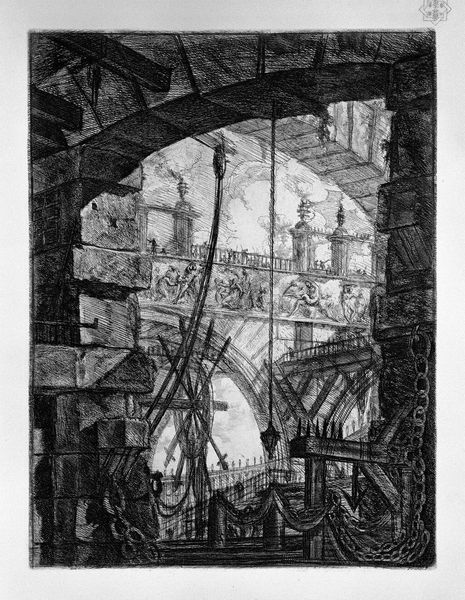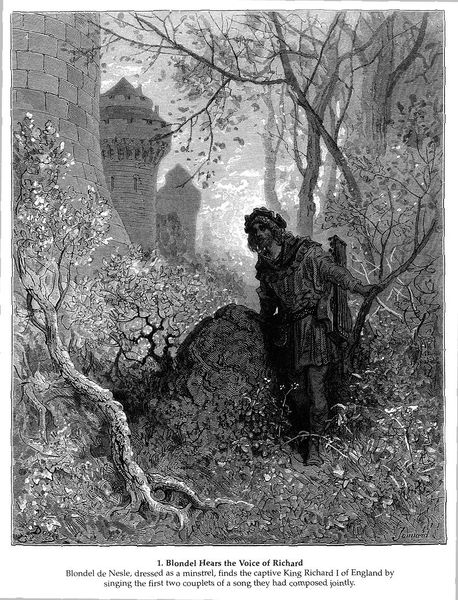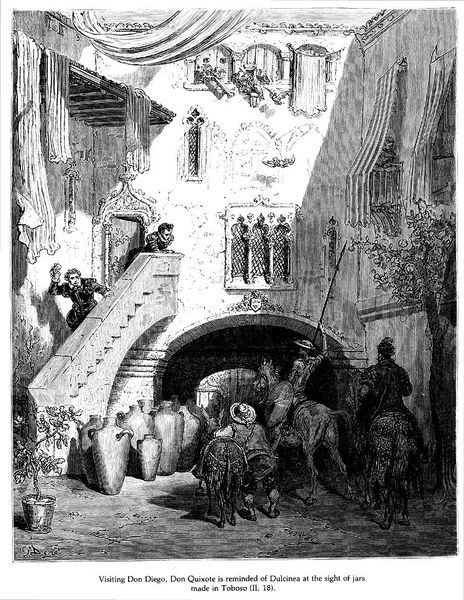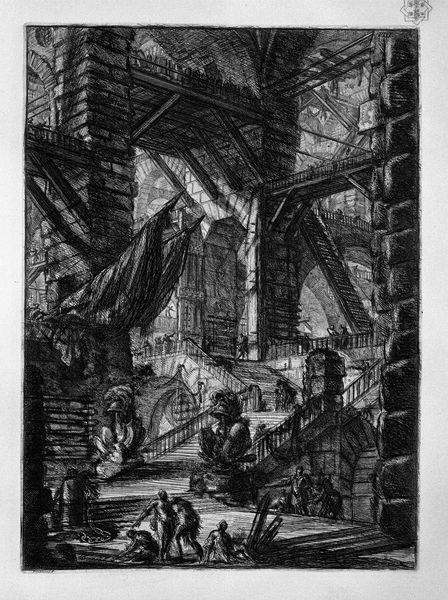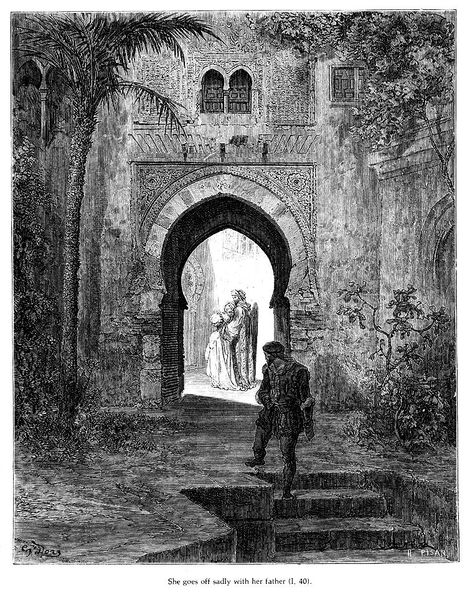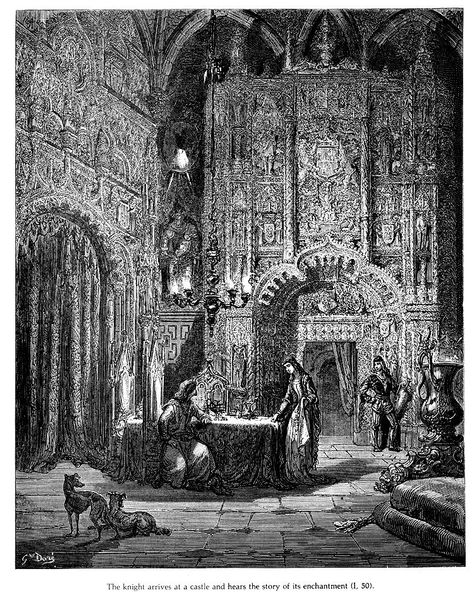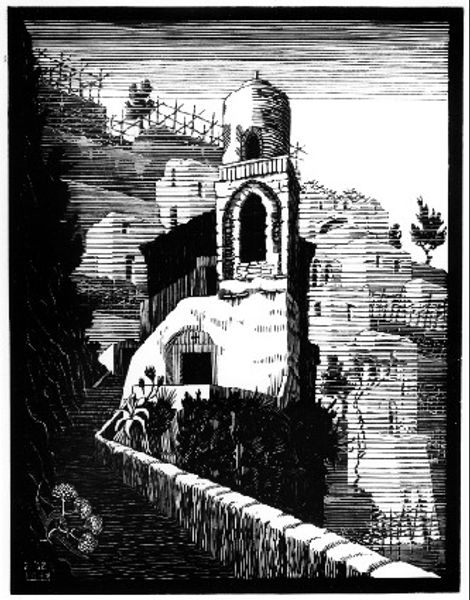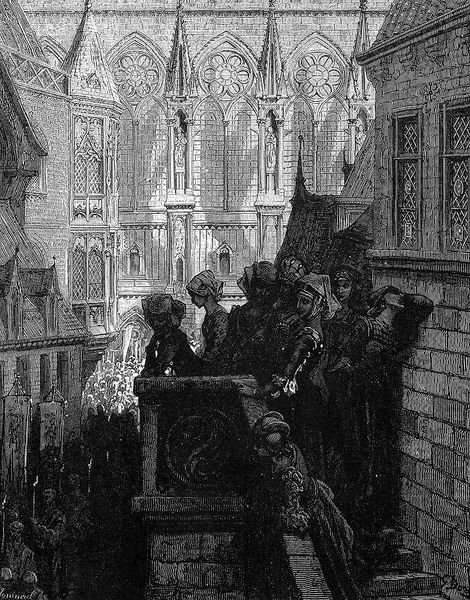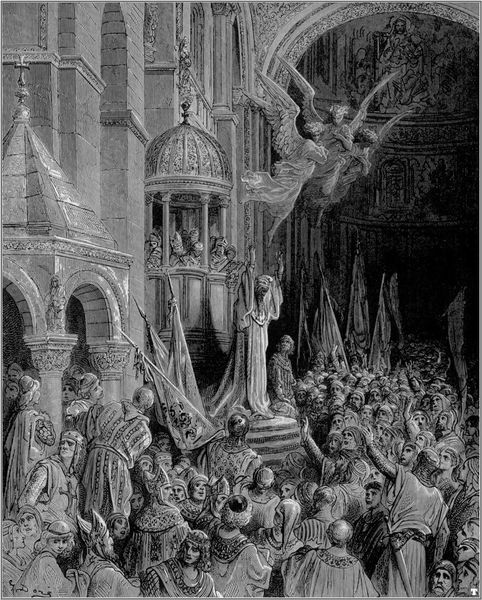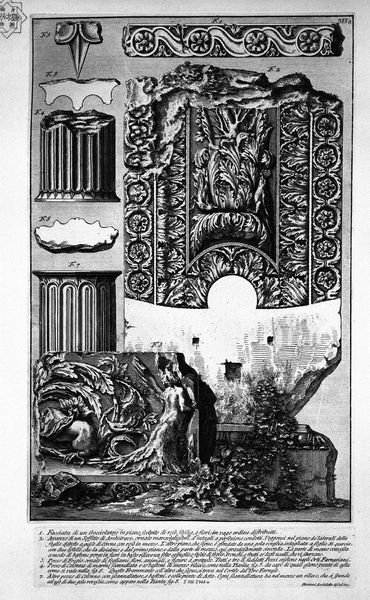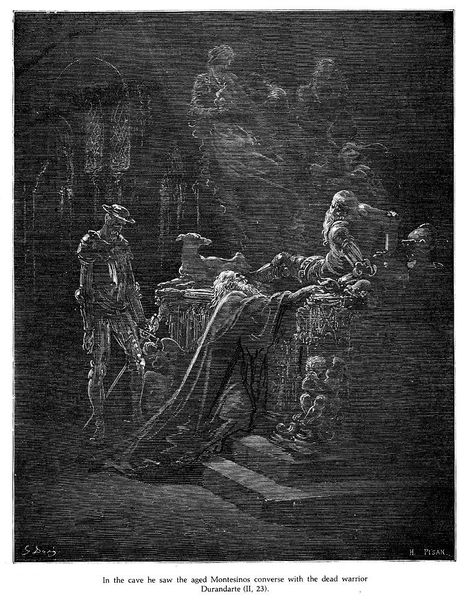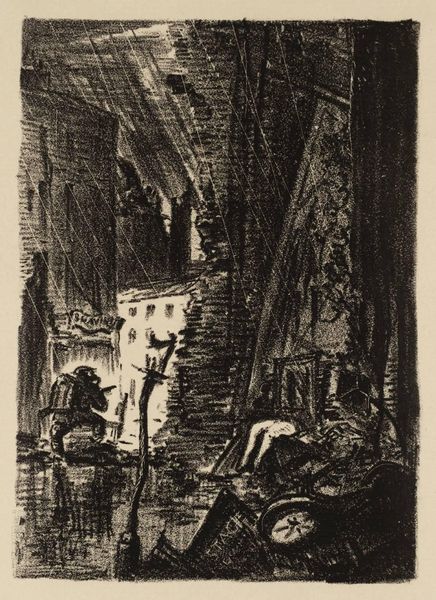
drawing, photography, engraving
#
drawing
#
narrative-art
#
figuration
#
photography
#
romanticism
#
line
#
history-painting
#
engraving
#
monochrome
Copyright: Public domain
Curator: Look at this incredible engraving by Gustave Doré, titled "Don Quixote." Doré produced a wealth of images illustrating classic literature, and this is a particularly striking example. Editor: It is quite dramatic. The heavy shadows create such a strong sense of intrigue. What strikes me immediately is how Doré uses light and shadow to direct the viewer’s eye – leading us through the clandestine exchange. Curator: Absolutely. This piece depicts Luscinda handing a letter to a stranger, meant for Cardenio. This type of secret correspondence was critical for plotting rebellion during the time. Editor: And look at how he employs line! There's a real density to it; the density creates varied textures, particularly in the figures’ costumes and the building facades. It gives such weight to the scene. Curator: Doré was commenting, through these images, on the nature of heroism, or perhaps its absence, within contemporary society. "Don Quixote" explores the romanticization of the past against a backdrop of disillusionment. Editor: Yes, it's there in Don Quixote's downward glance and burdened stance; and the drooping head of the donkey only intensifies this sense of weary idealism. The contrast with the clandestine exchange and upper class sets up some visual irony. Curator: Engravings like this had a very wide circulation and made the world of Cervantes accessible to a mass audience. They shaped interpretations of the text and its characters. It speaks to the importance of art and media to reflect and perpetuate stories in socio-cultural dynamics. Editor: It's interesting how a piece so full of intricate detail also conveys such a clear emotional narrative through visual cues like that posture, and how line weight and shadowing are used. I see the same narrative across Doré’s illustrations, each telling complex story visually. Curator: Thinking about it, the composition and the strategic use of shadow adds another layer to understanding this social dynamic and clandestine event. Editor: And Doré’s handling of light allows him to portray a world of shadows where nothing is quite as it seems and everything carries a secret. It is quite effective as visual narrative.
Comments
No comments
Be the first to comment and join the conversation on the ultimate creative platform.
